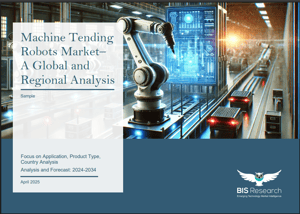 As the race toward full automation accelerates, machine tending robots are transforming the backbone of modern industry—one computer numerical control (CNC) machine, lathe, and injection molded at a time.
As the race toward full automation accelerates, machine tending robots are transforming the backbone of modern industry—one computer numerical control (CNC) machine, lathe, and injection molded at a time.
These intelligent robotic systems are not only improving efficiency but are also redefining safety, quality, and uptime across production floors globally.
What Are Machine Tending Robots?
At their core, machine tending robots are robotic arms equipped to manage machine operations—primarily loading and unloading parts in automated manufacturing environments. These robots are typically deployed with CNC machines, press brakes, plastic injection molding machines, and die-casting equipment. With the ability to work autonomously or alongside humans (in the case of collaborative robots), they’ve become an integral part of Industry 4.0 setups.
Beyond just repetitive motion, today’s robots are enhanced with AI, machine vision, force sensors, and real-time data feedback, allowing them to handle parts with human-like precision while maintaining continuous productivity.
Why the Machine Tending Robots Market Is Booming
According to BIS Research, the global machine tending robots market is projected to grow from $9.87 million in 2024 to $25.6 million by 2034, at a CAGR of 9.99%. Several forces are converging to fuel this momentum:
- Labor shortages in manufacturing-heavy regions like Europe, the U.S., and Japan have made automation a necessity rather than a luxury (Investors Business Daily, 2024).
- A global push toward 24/7 production is also encouraging manufacturers to adopt robotic systems that can operate non-stop with minimal human oversight.
- Robotics is now viewed not just as a cost center but as a long-term investment, offering faster cycle times, fewer defects, and higher ROI.
Tech Breakthroughs: From Cobots to AI-Driven Precision
One of the most compelling trends in this sector is the rise of collaborative robots, or cobots. Companies like Universal Robots have introduced cobots specifically designed for machine tending, featuring integrated force-torque sensors and user-friendly interfaces (Universal Robots Blog, 2024).
In parallel, AI and vision-guided robotics are enabling smarter operations. These systems can now identify part orientation, detect inconsistencies, and adapt on the fly—no need for pre-programmed instructions for every variation. At the IMTS 2024 trade show, several vendors showcased cobots with real-time AI capabilities that could switch tasks with minimal human intervention (Control Engineering, 2024).
One striking innovation came from Amazon’s robotics division: Vulcan, a robot that simulates a human sense of touch using tactile sensor arrays. While it’s currently deployed in warehouses, its underlying tech has direct applications in machine tending, particularly in delicate material handling (The Guardian, May 2025).
On-the-Ground Adoption: Real-World Success Stories
In Sweden, FT-Production, a precision aluminum parts maker, deployed collaborative applications for machine tending, leading to a 40% improvement in productivity. Their cobots handle monotonous tasks like feeding raw stock into CNC machines and unloading finished parts—tasks that used to strain their human operators (OnRobot Case Study, 2024).
Automotive giant BMW is another prime example. In its German plants, BMW uses KUKA robots to manage the machining of engine components. These robots interface with MES (Manufacturing Execution Systems) to coordinate work-in-progress tracking, significantly improving part traceability and reducing defects (KUKA Robotics Europe, 2023).
Challenges to Consider
Despite their advantages, machine tending robots are not without hurdles:
- Upfront investment can be steep—especially for SMEs that may struggle with the capital cost of robots, grippers, sensors, and integration services.
- Workforce reskilling is also essential. As robots become more intelligent, operators must evolve into robot programmers or system integrators.
- System complexity can delay deployment. Integrating robots with older machinery or non-standard production lines often requires custom development and thorough testing.
What’s Next: Smarter, Modular, and More Agile
Looking ahead, machine tending robots will become more modular, allowing them to switch between tasks or cells with minimal setup. Integration with cloud-based analytics, predictive maintenance platforms, and digital twins will further enhance performance and reliability.
As edge AI becomes mainstream and connectivity improves with protocols like OPC UA, these robots will evolve into connected nodes within broader IIoT ecosystems.
Ultimately, machine tending robots are far more than just mechanical assistants—they’re becoming intelligent collaborators that enable businesses to scale with precision, resilience, and speed. For manufacturers looking to stay competitive in an increasingly automated world, the question is no longer if they should adopt robotic tending—but when and how.
About the Publisher: BIS Research is a global market intelligence, research and advisory company that focuses on emerging technology trends that are likely to disrupt the market. Its team includes industry veterans, experts, and analysts with diverse backgrounds in consulting, investment banking, government, and academia.






